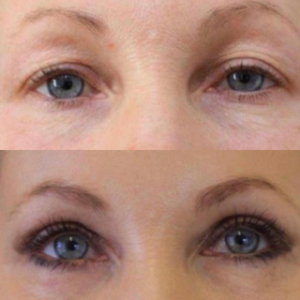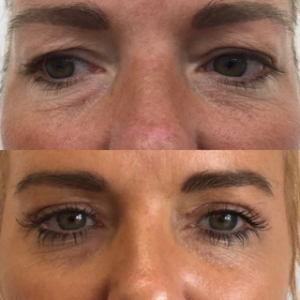EYE LID SURGERY
Our eyes reflect our feelings and thoughts and the ageing process can mask how we are really feeling. Heavy eyelids can not only make us look old but can start to affect the normal function of the eyes too. Referred to as Blepharoplasty, this surgery can transform and rejuvenate the faces of both men and women of all ages, as well as correct hereditary imperfections.
We use Blepharoplasty surgery to correct:
- Baggy or heavy eyelids
- Excess skin on the upper eyelids, which starts to affect normal vision
- Eyebags under the eyes
- Excess skin under the eyes causing wrinkles and lines
- Excess fat pockets in the upper and lower lids
- The muscles in order to create more shapely lids
- Asymmetry of the upper and lower lids
- Imperfections is the mid face
- Hereditary imperfect eyelid shape
- Cultural shaping (Asian eyelid surgery)
Treatment time
Each patient is different, and this will be reflected in the time it will take to complete the surgery, which can be between 1 to 2 hours.
Results Duration
As with all surgical procedures we continue to age, but having set the clock back, we expect patients to benefit from the surgery for 5-10 years or more.
Treatment Price
Prices start from £2,500
Recovery Time
Both upper and lower eyelid surgery can result in swelling and bruising.
For these reasons we recommend that patients having upper blepharoplasty only, take 5-7 days out of their normal work and social commitments.
For patients having lower eyelid surgery only or upper and lower surgery at the same time, they should consider taking 7 - 10 days off their normal work and social commitments.

Eyelid surgery, before (left) and after (right).

Eyelid surgery, before (left) and after (right).

Eyelid surgery, before (left) and after (right).
FAQS
What is involved with upper eyelid surgery (upper blepharoplasty)?
A small incision is made along the eye crease and excess skin (and sometimes fat) is removed. A thin stitch is then used to bring the skin together, which is hidden in the crease.
Who is a good candidate for eyelid surgery?
Eye lid surgery is not always associated with ageing concerns, although most of our patients do come for this reason. Some younger female patients aren’t happy with their inherited eyelid shape and desire more ‘lid show’ and a defined crease to enable them to use their make up to better effect. Some cultures desire a more ‘western’ eye shape and this is often seen with Asian patients who favor a more ‘open’ eye shape.
How would I prepare for eyelid surgery?
Prior to surgery we ask you to follow some pre-operative instructions. Smoking and alcohol can contribute to poor would healing and bruising so we ask that cigarettes and alcohol are avoided two weeks before and after surgery. We have prepared a list of medications and foods that should be avoided before surgery and these will be given to you at your consultation.
How long is the recovery time for eyelid surgery?
Patients usually have a short recovery time after blepharoplasty. Although bruising and swelling is usually worse on the day after surgery, it quickly begins to disappear. During the first 48 hours, the use of cool compresses can greatly reduce bruising and swelling around the eyes and face. The stitches will be removed 5-7 days after surgery. Sometimes self-absorbing stitches are used that do not require removal. Most people return to normal activities after 7 to 10 days following upper and lower blepharoplasty.
What are the potential risks and complications of eyelid surgery?
As with any surgery, there are potential risks and complications of blepharoplasty. Whilst this is a relatively safe procedure and the risks are rare, they can include infection, bleeding, scarring, inability to close the eyes, dry eye, abnormal eyelid position, double vision, and loss of vision. All risks will be discussed with you prior to surgery.













 Call Now
Call Now